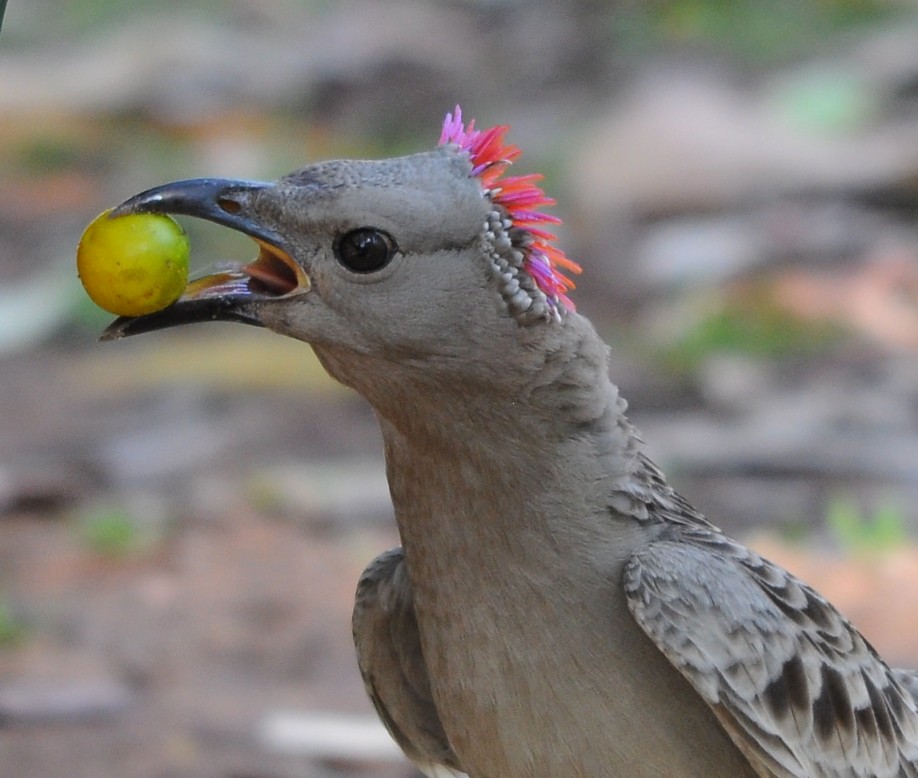Aerial courtship displays are fairly common throughout the avian world, however relatively little is known about the complexities and functions of these displays (Arroyo et al. 2013). Just as morphological characteristics can be used by females to assess the quality of a prospective male, so too can behavioural displays (Clark 2009). Some behavioural displays may serve as an honest indication of overall condition and may become elaborate and exaggerated due to directional selection caused by female preference (Arroyo et al. 2013, Clark 2009).
The Golden Eagle (Aquila chrysaetos) is just one of many species of birds that perform aerial courtship displays, https://www.youtube.com/watch?v=koWpTZ8Jo-s. Viewed on 30th April 2017.
Male Anna's Hummingbirds (Calypte anna) perform spectacular aerial dives as a component of their courtship behaviour, in which they can reach speeds of up to 385 body lengths per second - achieving the highest known length-specific velocity of any vertebrate (Clark 2009). Males ascend to a height of approximately 30m before diving head first and swooping over a watching female (Clark & Feo 2008). As they perform this incredibly fast dive they emit a brief, loud squeak or chirp produced by air passing over their tail feathers (Clark & Feo 2008). It is a puzzling display as the males go to great lengths to produce this sound that requires extremely high velocities, but are capable of singing at the same frequency (Clark & Feo 2008). So why do they go to this effort to produce an accoustically similar sound mechanically when they can produce it vocally??? Another unanswered question!!!
 |
| The male Anna's Hummingbird (Calypte anna) achieves the highest known length-specific velocity of any vertebrate. Image sourced from http://animalia-life.club/birds/annas-hummingbird.html. Viewed on 28th April 2017. |
Raptors are well known for their spectacular aerial displays (Arroyo et al. 2013). In one species of raptor, the Montagu's Harrier (Circus pygargus), males perform frequent "sky-dancing" displays leading up to the breeding season, in which they ascend before rapidly plunging downward while performing twists, undulations, loops and display calls (Simmons 1988). The timing of these displays suggests that they may well be used in the process of mate appraisal and selection (Arroyo et al. 2013, Simmons 1988). The "aerial display hypothesis" in which aerial agility and hence small size is favoured by sexual selection, is also supported by this species in which males are lighter and more agile than females (Arroyo et al. 2013, Simmons 1988).
These are just two examples of the many species of birds that perform aerial courtship displays. I have been lucky enough to witness some of these incredible aerial courtship displays first-hand, the most impressive of which would have to be that of the Red-tailed Tropicbird, although I found it difficult to learn anything about this in the scientific literature. The birds gracefully circle each other over the ocean in the period leading up to the breeding season - a beautiful display by a beautiful bird!!!
 |
| The striking looking male Montagu's Harrier (Circus pygargus) perform frequent "sky-dancing" displays leading up to the breeding season. Photo by Saptagirish Oleti, http://www.girisholeti.com/show_photo.php?album_id=1&photo_id=47. Viewed on 29th April 217. |
These are just two examples of the many species of birds that perform aerial courtship displays. I have been lucky enough to witness some of these incredible aerial courtship displays first-hand, the most impressive of which would have to be that of the Red-tailed Tropicbird, although I found it difficult to learn anything about this in the scientific literature. The birds gracefully circle each other over the ocean in the period leading up to the breeding season - a beautiful display by a beautiful bird!!!
 |
| Red-tailed Tropicbirds (Phaethon rubricauda) performing an aerial courtship display. Photo by Paul Mckenzie, http://www.wildencounters.net/2012/06/midway-atoll-april-2012/. Viewed on 29th April 2017. |
References
Arroyo, B., Mougeot, F. & Bretagnolle, V. 2013, "Characteristics and sexual functions of sky-dancing displays in a semi-colonial raptor, the montagu's harrier (Circus pygargus)", Journal of Raptor Research, vol. 47, no. 2, pp. 185-196
Clark, C.J. 2009, "Courtship dives of Anna's hummingbird offer insights into flight performance limits", Proceedings of the Royal Society B: Biological Sciences, vol. 276, no. 1670, pp. 3047-3052.
Clark, C.J. & Feo, T.J. 2008, "The Anna's hummingbird chirps with its tail: a new mechanism of sonation in birds", Proceedings of the Royal Society B: Biological Sciences, vol. 275, no. 1637, pp. 955-962.
Simmons, R. 1988, "Honest advertising, sexual selection, courtship displays, and body condition of polygynous male harriers", The Auk, vol. 105, no. 2, pp. 303-307.



